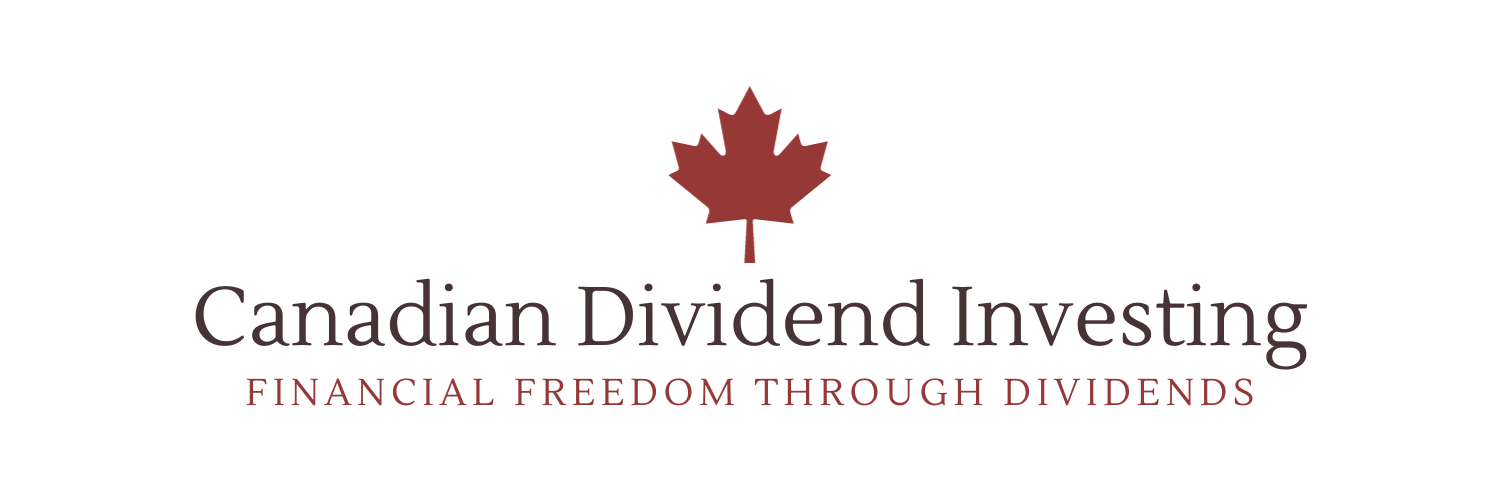I owned physical real estate for 20+ years.
While I can’t complain about the result — I generated a good return and got out before real estate values started to decline in 2023 — I’m not sure I would do it again. Owning physical real estate is a ton of work. You have to show the property, deal with tenant issues, fix anything that breaks, collect the rent, deposit the rent, do up all the paperwork, and a million other things I’m not mentioning. It’s legitimately a part-time job, especially if you own multiple units.
I was fortunate. I had a fantastic property manager. But so many other landlords aren’t so lucky, and they end paying management fees for someone to do a half-ass job.
If I had it to do over again, I think I’d buy a portfolio of REITs instead. REITs offer the true lazy way out. There’s no work involved, you simply sit around and wait to collect your distributions. But that’s not all. REITs offer other advantages for the lazy investor, including:
- Professional management
- Instant diversification
- Access to commercial, industrial, and other specialized forms of real estate
- Transparency
- Liquidity
Plus, I’ve never had a REIT plug up a sewer line with tampons.
Yes, that’s a true story. No, I won’t talk about it. It was 20 years ago and it’s still a little raw.
Needless to say, I’m a fan of REITs, and I own them extensively in my own portfolio. They’re an excellent choice for enterprising Canadian dividend investors, since they typically pay out fat yields and are fairly steady businesses. After all, real estate is generally pretty boring.
Before I present my top choices in the Canadian REIT sector for 2024, a few words on the basics of investing in REITs. They’re just a little bit different than your typical stock.

What you need to know about REITs
There are a few things you need to know before you get started investing in REITs.
Firstly, REITs don’t actually pay dividends — they pay distributions. A distribution consists of interest income, return of capital, or capital gains. The exact breakdown changes from REIT to REIT and from year to year. The important thing to know is they’re not dividends, and are they’re not eligible for the dividend tax credit.
Many investors hold REITs in their RRSPs or TFSAs to eliminate this distribution confusion come tax time, but your brokerage makes this relatively easy to navigate even if REITs are in your taxable account. Everything gets summarized on a T3 form, meaning it’s not super complex even if you own dozens of REITs.
Typically, REITs are diverse owners of real estate, but lately the trend has been for REITs to get a little more concentrated. A typical REIT still owns a diverse portfolio spread across multiple cities or provinces, but generally they limit themselves to one asset type. There used to be many REITs that held retail, office, and industrial properties. Now most REITs will pick one part of the real estate sector and stick with it, with the REITs diversified across numerous real estate asset classes falling out of favour.
REITs also report earnings a little differently than most companies. Because REIT accounting requires a company to revalue its properties constantly, these increases (or decreases) get reflected in net earnings. A more pure look at a REIT’s earnings is funds from operations (FFO), which ignores any changes in the value of the portfolio. Many REITs will further report adjusted funds from operations (AFFO), which is the equivalent of a REIT’s free cash flow, and includes things like capital improvement projects and any incentives given to tenants to lease a space.
Next, I want to highlight the number one thing that REIT investors should worry about — debt. Much of a REIT’s expenses are paying the interest on debt, so it really matters. Generally, investors want to avoid REITs with high debt levels, no matter how enticing their distribution yield is. A good rule of thumb is to buy REITs with a debt-to-assets ratio under 50%.
A company’s book value is pretty much useless in 2024, as we live in a world where so many assets are intangible in nature. But REITs are the exception, with book value actually being a fairly important metric. A REIT will adjust the value of its assets based on prevailing interest rates, meaning book value has at least some predictive power on valuation. It should be relatively accurate, although REITs are accused of fudging their values all the time, especially in a rising interest rate environment.
REITs typically disclose net asset values (NAVs) to investors which are pretty close to the same thing as book value.
What I’ve found is its easiest to analyze REITs like you’re buying property. Look at how much net operating income a REIT generates and then figure out the return on those assets. Rather than get into that here, check out my guide on how to buy REITs like an owner (coming soon!)
How that I’ve highlighted the most important things to look for, let’s get to it. Here are the top 6 REITs I like in 2024.
Primaris REIT

Let’s start off with a REIT that, at first glance, seems frozen in the 1990s. Primaris REIT (TSX:PMZ.un) is the owner of shopping malls across Canada, with 25 assets spanning more than 11.5M square feet of gross leasable space, worth in excess of $3B. Some of its largest properties include Dufferin Mall in Toronto, Halifax Shopping Centre in Nova Scotia, and Devonshire Mall in Windsor.
The shopping mall took a major hit during COVID as shoppers were ordered to stay home. But the sector recovered nicely and by the end of the pandemic was poised to do well. Primaris specifically saw occupancy improve from the 85% range all the way up to today’s level of nearly 93%, as retailers saw the benefit of having physical stores in shopping centres.
Primaris has also been helped by a lack of shopping mall development over the past 20 years as developers have favoured open-air spaces. Canada’s shopping mall sector wasn’t nearly as overbuilt as the United States, meaning Primaris owns solid, well-located assets with a relatively bright future. Nobody is building any enclosed shopping malls in Canada today, especially in the places where Primaris owns its property. Canada’s aggressive immigration program helps on this front, too.
The company also plans an interesting development program for the next few years, either selling off or developing excess parking space it owns into condo towers. These towers are attractive to prospective tenants since they’re usually close to mass transit and have ample retail amenities nearby. The cash it frees up on these deals will help it acquire additional malls, continuing this virtuous cycle.
Not only does Primaris have a compelling investment thesis; it also offers a quite attractive valuation. The company should earn approximately $1.30 per share in FFO in 2024, putting shares at just over 10x earnings. That’s cheap, but it’s extra cheap when we consider Primaris’s balance sheet. It’s one of the best in the sector, with a debt-to-assets ratio of just 35%.
Primaris pays a safe, well-covered distribution, with shares currently yielding around 6%.
Granite REIT

Granite REIT (TSX:GRT.un) is one of Canada’s largest owners of industrial real estate. Its portfolio consists of 137 income-producing properties in Canada, the United States, and a smattering in Europe. The portfolio spans nearly 63M square feet of space and occupancy has been consistently above 95% for years now.
The company originally IPOed back in 2012, consisting primarily of property leased to Magna. More than 90% of its portfolio was leased to the auto parts giant, but the company diversified and acquired other property over the years. These days, less than 20% of space is rented to Magna, and there are various development projects in place to bring that percentage even lower over time.
Industrial property has been booming for years now, as various companies realize the need to invest in warehouse space, especially in a world where more and more products are purchased online. This increased demand has helped Granite both quickly lease any new development it brings online, but also to raise rents to its existing tenants. That’s a nice double-whammy, at least from Granite’s perspective.
Granite has delivered excellent long-term growth, more than doubling its FFO per share from 2013 to 2023. It also did so while maintaining an excellent balance sheet, with a debt-to-assets ratio that has consistently stayed under 35%. When rates went up in 2023 Granite weathered the storm about as easily as anyone in the entire sector.
Many REITs pay out in excess of 80% of their earnings to investors in the form of distributions. Granite has a different strategy, with its payout ratio comfortably under 70% of FFO. This allows it to accumulate more cash to put towards new developments, allowing it to grow faster than most of its peers.
Granite’s distribution yield is one of the lowest ones on this list, but it still offers a 4.3% yield today. Granite also has one of the most impressive distribution growth streaks in the Canadian REIT world, increasing its payout each year since 2013.
Choice Properties REIT

Choice Properties (TSX:CHP.un) is Canada’s largest REIT, owning an impressive 704 different properties, spanning more than 64M square feet of gross leasable space. Choice is majority owned by the Weston family, and much of its portfolio consists of grocery-anchored real estate space. Not surprisingly, Loblaw is the REIT’s largest tenant by a mile, with more than 60% of revenue coming from the various Loblaw banners. Overall occupancy is above 97% and the average lease expiry isn’t until 2030.
Some investors might struggle with that kind of dependence on a top tenant, but not me. Loblaw is Canada’s largest retailer, a behemoth in a competitive space. Besides, grocery and real estate go hand in hand. The tenant is loathe to give up space, and will only do so if a store is really struggling. Grocers are also patient, and will happily run a store for years without it making much money, knowing that population growth will eventually make the store much more lucrative. Loblaw is probably the most patient of anyone in the grocery business in Canada, as evidenced by its long-time family ownership.
Like Primaris, Choice Properties has embarked on a development program, but Choice’s is a little different. Choice owns dozens of properties in high density areas of cities like Toronto, Vancouver, and Montreal. It’s using that land to build mixed-use buildings, typically those with retail space on the first couple of floors combined with residential space above. It’s a win-win; Choice maximizes its space by building upwards and tenants get to rent property with amenities close by, including a grocery store right downstairs.
Choice’s retail portfolio also attracts other ancillary tenants. Businesses like banks, fast food joints, or specialty retailers love moving into buildings located in the same parking lot as a grocery store, attracted by the steady flow of traffic and quality location.
Choice isn’t super cheap on a price-to-FFO perspective, with shares trading at approximately 14x 2024’s expected funds from operations. But it’s a reasonable valuation for such high quality assets. The company’s debt is pretty good too, with the all-important debt-to-assets ratio coming in at around 40% of assets.
Finally, Choice offers a solid distribution. It yields just under 5.5% today, and offers the potential for distribution increases in the future with its attractive payout ratio and robust development pipeline.
Morguard Residential REIT

Morguard Residential REIT (TSX:MRG.un) continues to be my favourite way to get exposure to residential property, in both Canada and the United States.
Morguard Residential is majority owned by Morguard, which in turn is majority owned by K. Rai Sahi, one of Canada’s most successful real estate entrepreneurs. Morguard Residential’s portfolio is worth more than $4B and spans 42 multi-unit apartment buildings and more than 12,000 suites. Approximately 40% of the portfolio is in Canada — primarily in Ontario — with the rest spread across the United States, in places like Florida, Georgia, Texas, and Illinois.
It’s been a good few years to be a residential landlord. A chronic housing shortage in Canada has allowed the company to raise rents as aggressively as it can. Rental growth has been better from its U.S. portfolio, since it isn’t encumbered by rent control. Morguard has also been able to hike rents significantly on suites in Canada where the tenant moves out. Overall, it has translated into total rental growth of more than 5% per year.
The key feature that attracts me to Morguard is its cheapness. The company should earn $1.60 per share in funds from operations in 2023, with that number poised to increase in 2024. As I type this, the stock trades for $15.10 per share. That gives us a price-to-FFO multiple of less than 10x, which is by far the cheapest of its peers.
Another way Morguard is cheap is on a price per unit basis. If you add up the company’s market cap and its debt, and then divide that by the number of suites it owns, investors are paying the equivalent of approximately $175,000 per suite. Considering average rent is just over $2,100 per month, that’s a very attractive valuation.
Finally, Morguard Residential offers a nice distribution — units currently yield 5% — with a payout ratio under 50% of FFO. This low payout ratio, combined with the company’s rental growth potential, positively sets it up for distribution increases going forward.
Canadian Tire REIT

Canadian Tire REIT (TSX:CRT.un) was created when Canadian Tire spun its real estate assets into a separately-held REIT back in 2013. These days, CT REIT has a portfolio consisting of more than 370 different properties, spanning some 30M square feet of gross leasable area. The portfolio is almost entirely leased to the various Canadian Tire banners, and it also owns a smattering of industrial property that are primarily used as Canadian Tire warehouses.
Like with Choice Properties, this reliance on one tenant isn’t such a bad thing. Canadian Tire is practically an institution in Canada, and other chains it owns like Marks and Sport Chek have delivered solid growth. It also ensures a steady avenue of growth, with Canadian Tire telling its REIT that it has the right of first refusal to buy any property it owns.
Canadian Tire owns approximately 40% of the REIT, ensuring a fair and honest transaction whenever the two entities exchange property. In fact, the parent has sold its subsidiary more than 100 properties since 2014.
CT REIT is conservatively managed, with an attractive debt-to-assets ratio of approximately 40%. It takes a slow approach to development, ensuring it doesn’t grow assets without growing its earnings on a per share basis. In fact, it has decreased its debt-to-assets ratio pretty steadily in the last decade, an impressive feat since it also grew earnings at the same time. It has also steadily grown net asset value per share, increasing that metric from just over $11 per share in 2014 to approximately $16.50 today. Shares trade at approximately 10% under the current net asset value.
Earnings growth has also been remarkably consistent, with adjusted funds from operations per share increasing by approximately 4% per year for the last decade. This has translated into a 4% distribution hike each year, making CT REIT one of the few REITs in the market with that kind of distribution growth. The current distribution yields just over 6% too, an interesting combination of current yield and growth in the future.
Automotive Properties REIT

Automotive Properties REIT (TSX:APR.un) is an interesting specialty REIT I think deserves a mention. It is the owner of car dealership real estate, growing its portfolio significantly since its 2015 IPO. These days, Automotive Properties owns 77 properties, spanning nearly 3M square feet of gross leasable area, with approximately 80% of its assets located in Canada’s largest cities.
The REIT has a couple of really powerful factors working in its favour. Firstly, Canada’s auto dealership ownership class is incredibly fragmented, with more than 1,500 dealerships across Canada owned by ma and pa owners rapidly approaching retirement. Sometimes their kids want to take over, but most of the time they don’t. Many of these dealerships will be sold to corporate owners.
Secondly, buying a car dealership is expensive because the buyer usually ends up buying the real estate. If a buyer can buy a dealership and then sell the real estate back to someone like Automotive Properties, it frees up cash that can get put towards the next purchase. It’s a viable growth plan for both the dealership group and the eventual owner of the real estate.
Most of Canada’s largest dealership groups have sold property to Automotive Properties REIT, including Dilawri, AutoCanada, GoAuto, and Groupe Olivier in Quebec. Dilawri is the largest shareholder, and Automotive Properties has the right of first refusal to acquire any Dilawri properties it might put up for sale.
The very nature of automotive dealership leasing favours long-term leases, with Automotive Properties’ average lease length of more than 10 years. That’s among the longest average lease length of any REIT in Canada. These leases have built-in rent escalators as well, usually tied to inflation. They’re triple-net leases too, meaning the tenant takes care of the insurance, taxes, and maintenance. Combine that with the growth potential as more car dealerships get acquired and hopefully you can see why I mentioned Automotive Properties.
The company should earn approximately $1 per share in FFO in 2024, putting it at an attractive 11x FFO multiple. That’s not a bad price to pay for such a unique asset class. It also offers one of the more attractive payouts in the sector, a distribution yield which is currently 7.4%.





